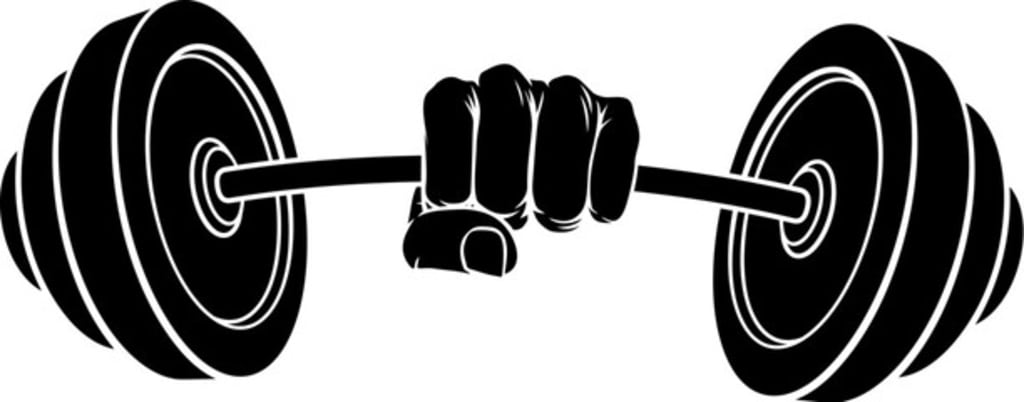Building Bigger Muscles - The Ultimate Guide
Building bigger muscles is a goal many fitness enthusiasts aspire to, whether it's for bodybuilding or simply to improve overall strength and physical appearance. Achieving this goal requires a combination of proper nutrition, exercise, and recovery. In this ultimate guide, we'll dive into the science behind muscle growth, the best exercises for building muscle, and the nutrition and training techniques necessary to maximize your results.

Building bigger muscles is a goal many fitness enthusiasts aspire to, whether it's for bodybuilding or simply to improve overall strength and physical appearance. Achieving this goal requires a combination of proper nutrition, exercise, and recovery. In this ultimate guide, we'll dive into the science behind muscle growth, the best exercises for building muscle, and the nutrition and training techniques necessary to maximize your results. Additionally, we'll discuss the importance of rest and recovery, common mistakes to avoid, and supplements that can aid in muscle building. By the end of this guide, you'll have everything you need to create a sustainable muscle building plan for long-term success.
Understanding Muscle Growth and Physiology

Breaking Down Muscle Growth
Muscle growth, or hypertrophy, occurs when muscle fibers become thicker and stronger. The process of muscle growth is triggered by resistance training, which causes small micro-tears in the muscle fibers. When the muscle fibers repair themselves, they become stronger and thicker than before.
The Role of Hormones in Muscle Growth
Hormones play a crucial role in muscle growth. Testosterone, for example, is a hormone that stimulates protein synthesis and muscle growth. Growth hormone is another hormone that promotes muscle growth and repair.
The Different Types of Muscle Fibers
There are two main types of muscle fibers: slow-twitch and fast-twitch. Slow-twitch fibers are used for endurance activities such as long-distance running. Fast-twitch fibers, on the other hand, are used for explosive movements such as sprinting and weightlifting. To maximize muscle growth, it's important to target both types of muscle fibers through a variety of exercises.
Nutrition for Muscle Building

Caloric Intake and Macros
To build muscle, you need to consume more calories than you burn. This is known as a calorie surplus. In addition, it's important to consume the right macronutrients (protein, carbohydrates, and fats) in the right ratios. A common ratio for muscle building is 40% carbohydrates, 30% protein, and 30% fats.
The Importance of Protein
Protein is essential for muscle growth and repair. Aim to consume 1 gram of protein per pound of body weight per day. Good sources of protein include chicken, fish, beef, eggs, and protein powder.
Carbohydrates and Fats for Muscle Building
Carbohydrates provide energy for workouts, while fats help with hormone production and joint health. Good sources of carbohydrates include whole grains, fruits, and vegetables, while good sources of fats include nuts, seeds, and oily fish.
Essential Exercises for Building Muscle

Compound vs Isolation Exercises
Compound exercises work multiple muscle groups at once, while isolation exercises target specific muscles. Compound exercises are generally considered more effective for muscle growth, as they allow you to lift heavier weights and work more muscle fibers at once.
The Best Exercises for Each Muscle Group
To build muscle, it's important to target all the major muscle groups, including the chest, back, legs, shoulders, and arms. Some of the best exercises for each muscle group include bench press for the chest, deadlifts for the back, squats for the legs, military press for the shoulders, and bicep curls for the arms.
Focusing on Progressive Overload
To continue making gains in muscle size and strength, it's important to progressively increase the weight you lift over time. This is known as progressive overload and is one of the most essential concepts in muscle building.
Training Techniques for Maximizing Muscle Growth

High-Intensity Training (HIT)
HIT is a training method that involves performing a high number of reps with very heavy weights. This technique is very demanding and can be effective for building muscle quickly.
Pyramid Training
Pyramid training involves gradually increasing the weight you lift while decreasing the number of reps per set. This technique can be effective for building muscle and increasing strength.
Super Sets and Drop Sets
Super sets involve performing two exercises back-to-back with no rest in between, while drop sets involve decreasing the weight you lift during a set to continue working the muscle to failure. Both of these techniques can be effective for building muscle and increasing intensity in your workouts.
Rest and Recovery: Why It's Important for Building Muscle
When it comes to building muscle, many people focus solely on lifting weights and overlook the importance of rest and recovery. However, rest and recovery are vital for building bigger muscles.
The Importance of Adequate Sleep
One of the most critical aspects of rest and recovery is getting enough sleep. During sleep, your body releases hormones such as human growth hormone (HGH), testosterone, and cortisol, which all play a role in muscle growth and repair. Aim for 7-9 hours of sleep per night to optimize these hormonal benefits.
Active Recovery vs Rest Days
While rest days are crucial for muscle recovery, active recovery can also be beneficial. Light cardio or stretching can increase blood flow to your muscles, promoting healing and reducing soreness. Consider incorporating active recovery days into your workout routine instead of taking complete rest days.
Recovery Techniques like Massage and Stretching
In addition to rest and active recovery, other recovery techniques such as massage and stretching can also help prevent muscle soreness and improve range of motion. Foam rolling can also help alleviate muscle tension and improve flexibility.
Common Mistakes to Avoid When Building Muscle
When it comes to building muscle, there are several common mistakes that people make. Avoiding these mistakes can help you achieve your muscle-building goals more effectively.
Overtraining
Overtraining occurs when you exceed your body's ability to recover and can lead to muscle fatigue and injury. It's important to give your muscles enough rest and avoid working the same muscle groups too frequently.
Ignoring Proper Form
Using proper form during exercises helps prevent injury and ensures that you're targeting the intended muscle groups effectively. Take the time to learn proper form for each exercise you perform and ensure that you're maintaining proper posture and alignment.
Focusing Too Much on Isolation Exercises
While isolation exercises can be beneficial, it's important not to rely on them exclusively. Compound exercises that target multiple muscle groups at once are often more effective for building overall strength and size.
Supplements for Building Muscle
Supplements can be a helpful addition to muscle-building efforts, but they're not a magic solution. It's important to ensure that you're getting enough nutrients from whole foods as well.
Protein Powders and Bars
Protein is essential for building muscle, and protein powders and bars can help increase your protein intake. However, it's important to choose high-quality products that aren't full of added sugars and artificial ingredients.
Creatine
Creatine is a natural substance that can help increase muscle growth and strength. However, it's important to follow dosage guidelines and stay properly hydrated while taking it.
Branched-Chain Amino Acids (BCAAs)
BCAAs can help reduce muscle fatigue and improve muscle recovery. However, they're not necessary if you're getting enough protein from your diet.
Creating a Sustainable Muscle Building Plan for Long-Term Success
The key to building muscle isn't just a short-term commitment. It requires a sustainable plan that you can stick to for the long haul.
Setting Realistic Goals
Setting realistic, achievable goals is essential for long-term success. Don't expect to see dramatic results overnight, and focus on making slow, steady progress over time.
Planning for Plateaus and Adjusting Your Plan
Plateaus are a natural part of muscle-building, and it's important to plan for them. Adjust your workout routine and nutrition plan as needed to continue making progress.
Making Fitness a Lifestyle, Not Just a Phase
Building muscle and achieving fitness goals require a lifestyle change, not just a temporary phase. Embrace healthy habits such as regular exercise, healthy eating, and adequate rest to achieve long-term success. Building bigger muscles takes time, effort, and dedication, but the results are worth it. By following the tips and techniques outlined in this guide, you can achieve your muscle building goals and create a sustainable fitness plan for long-term success. Remember to focus on proper nutrition, exercise, and recovery, and don't be afraid to adjust your plan as needed. With consistency and persistence, you can build the bigger, stronger muscles you've always wanted.
About the Creator
Krishna raj
"If your dreams don't scare you, they're too SMALL"
Enjoyed the story? Support the Creator.
Subscribe for free to receive all their stories in your feed. You could also pledge your support or give them a one-off tip, letting them know you appreciate their work.






Comments
There are no comments for this story
Be the first to respond and start the conversation.